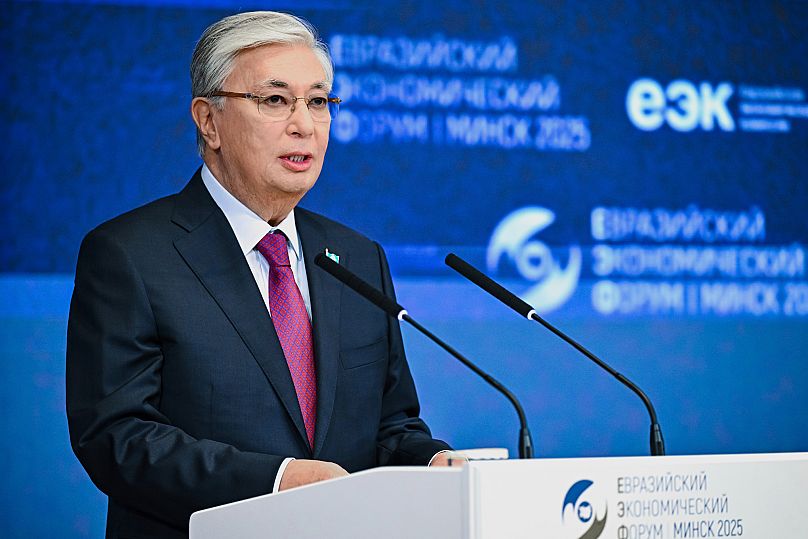On Monday, Kazakhstan’s President Kassym-Jomart Tokayev enacted an amendment to the crime prevention law that prohibits wearing facial coverings in public areas.
The new amendment states, 'It is not allowed to wear attire in public areas that obstructs facial identification,' and includes a list of exemptions.
This includes protective gear required for job purposes, like welding helmets.
Exceptions apply as well for activities related to healthcare, civil protection efforts, situations involving severe weather, and involvement in large-scale sporting or cultural gatherings.
Although the amendment does not specifically prohibit religious head coverings, it is widely interpreted to mean that women will no longer be permitted to wear a burqa or niqab in public spaces.
Nevertheless, wearing hijabs will continue to be permitted.
Unlike the niqab, which leaves only the eyes visible, and the burqa, which covers the entire face, the hijab covers the head but not the face.
Although more individuals have started dressing in religious clothing over the past five years in Kazakhstan, the hijab continues to be far more prevalent compared to the burqa or niqab.
One frequently cited objection to wearing the niqab and burqa is that covering one’s face has never been part of traditional attire for Kazakh women, with critics asserting that these practices stem instead from foreign influence originating in Arab nations.
Views on social media about the prohibition are split.
A number of people back the legislation, describing it as necessary and well-timed. However, some have condemned the decision, viewing it as a strategy by authorities to tighten their grip on citizens.
Earlier this year, President Tokayev stated, "Instead of dressing in black garments that cover the face, it is far preferable to attire oneself in traditional national clothing."
Our traditional attire strongly highlights our cultural heritage, which means we should promote it widely across all levels of society.
Several other Central Asian nations, such as Kyrgyzstan, Tajikistan, and Uzbekistan, have also implemented comparable regulations limiting women from wearing full-face veils or head coverings.

